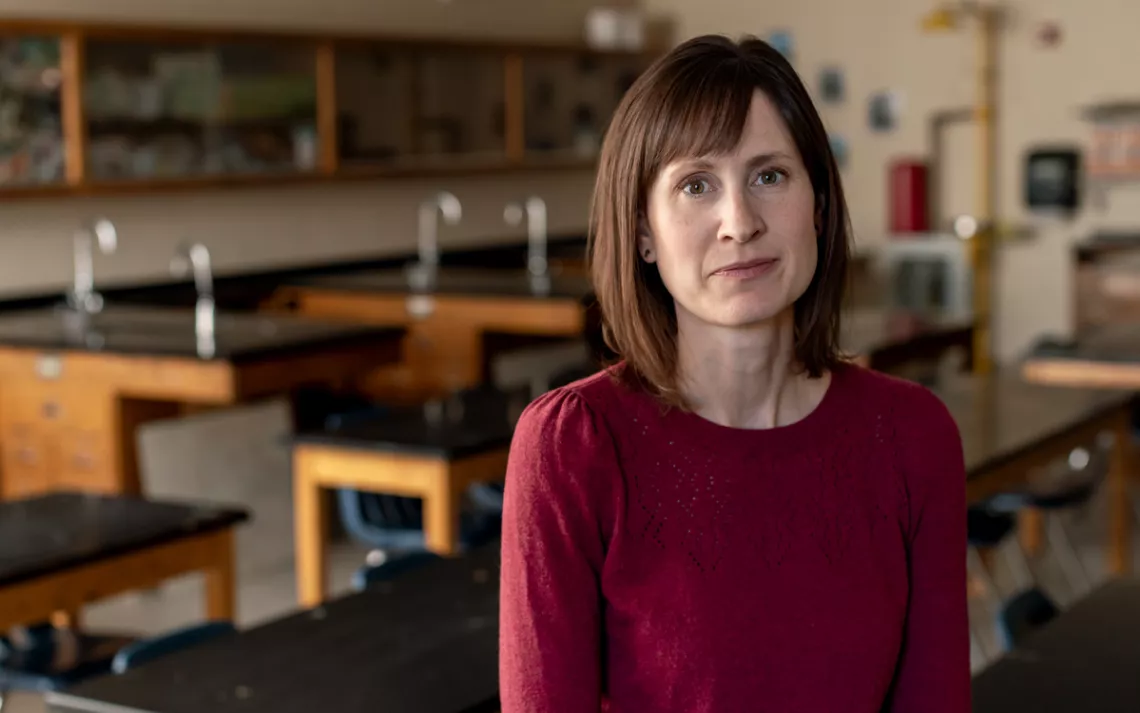For This Teacher, Solar Panels Offer the Best Science Lesson
Andrea Abeln helped get her school district to switch to renewable energy

Andrea Abeln, Minnesota | Photo by Sara Rubinstein
- Name: Andrea Abeln
- Location: St. Paul, Minnesota
- Contribution: Helped her school district commit to clean energy
What do you teach?
I've been teaching environmental science at Irondale High School for 17 years. I also teach biology. Climate change can be a real depressing thing to teach every day. Sometimes I don't have a lot of hope to offer. In a way, getting the school to switch to renewable energy has helped provide that piece of hope.
How did you come up with the idea?
I am the school's Earth Corps adviser. The students meet in my classroom. In March 2019, they brought to my attention an initiative for getting school districts to transition to clean energy. A core group of five to eight students, their parents, a few other teachers, and I hooked up with the Sierra Club's Climate Parents, and they helped us organize. We sent out a petition, and it caught fire. We got over 400 signatures.
Was the school district receptive?
Yes. We wanted to get the resolution passed in June, but at the last minute district officials said they needed more time, so over the summer, a physics teacher, another environmental science teacher, and I met with them to hammer out the details. The physics teacher was the expert on solar energy. He was able to answer the questions about solar panels, like "What happens if there's a hailstorm?"
So did it pass?
In early October, the school board agreed to switch to 100 percent clean electricity by 2030. As current equipment wears out, they'll consider replacing it with alternative forms of energy to phase out gas.
Why is a resolution like this so important?
In the big picture, we'll cut carbon emissions. But the resolution also ties in with our tech ed class, where kids are trained to work in the solar industry. We talk about renewable energy in all the science classes, so there are a lot of curricular components. If we're preparing kids for the future, we might as well do our part to make it a livable future for them.
Anything else you want us to know?
I, of course, want to say how great my students are. They inspire me to work for them, as do my own two kiddos—I have four- and six-year-old boys. I've always wanted to do something that isn't just "Let's recycle!" You know, something bigger. That's what excites me about this resolution. It's tangible and actually makes a difference.
This article appeared in the March/April 2020 edition with the headline "Gold-Star Teacher."
 The Magazine of The Sierra Club
The Magazine of The Sierra Club